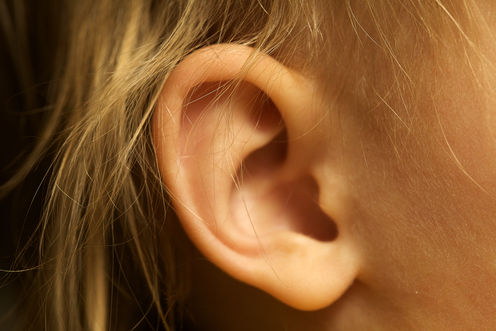
Ear wax, or cerumen, is a naturally occurring substance produced in the ears of many mammals, including humans. Despite popular beliefs about its uncleanliness, it helps keep our ears clean by filtering dust, debris, and other substances, such as shampoo and crayons, and protects the ear canal from infection.
The ear canal is essentially a cul de sac of skin that, unlike skin everywhere else, doesn’t get to remove dead cells through physical erosion. Ear wax is the creative solution to this problem.
Produced by the sebaceous and cerumenous glands in the ear canal, ear wax contains a range of organic compounds, including saturated and unsaturated long-chain fatty acids, alcohols, squalene, and cholesterol. Its precise composition varies between people and will depend on diet, ethnicity, their age, and the environment.

Ear wax has an important role in the ear’s function and, in most cases, doesn’t need to be got rid of. Our ears are self-cleaning, and if functioning as they should, require no input from us to keep them clean.
In some people, this self-cleaning mechanism gets disrupted, and ear wax gets trapped at some point along its path out of the ear canal. This can happen for a number of reasons including the anatomy of your ear (some people have a rather sharp bend in their ear canal).
Or, it can be due to the introduction of foreign bodies such as cotton buds, which actually cause the ear wax to become impacted deep in the ear canal. Because the ear keeps producing wax, the blockage slowing gets bigger, staying in the ear for years or decades.
Impacted wax can have a number of side effects including pain, general irritation, and sometimes infection. In some cases, it has been associated with tinnitus, which is a buzzing or ringing sound in the ears without an apparent direct cause.
Impacted ear wax can affect the movement of the ear drum or occlude the ear canal, making it difficult for sound to pass through. This occurs in up to 35% of people over the age of 65 and can cause a mild hearing loss, which is typically alleviated once the wax is removed.

Many efforts to clean ears actually disrupt its self-cleaning cycle. But with over 1,000 patents for ear wax removers, there’s clearly a strong desire – and market – out there to get rid of the stuff.
Still, you only need to have your ears examined if you’re experiencing the kind of symptoms of impacted ear wax mentioned above. In the first instance, a few drops of water or natural oil (olive, for instance or almond oil) can be effective for softening the wax and promoting its natural migration out of the ear.
If there’s no improvement, then you should consult a doctor, who may arrange for your ear to be syringed with water or refer you to an ear specialist to have the wax suctioned out under a microscope.
What you should never do is stick anything in your ear to clean it. At best, you will push part of the wax deeper into the ear, making it more difficult to remove. At worst, you will puncture your ear drum, resulting in a significant amount of pain, hearing loss, and a swathe of specialist appointments.

Sadly, most people neither believe nor heed warnings from health professionals regarding the use of cotton buds. And most hospitals will see approximately 150 cases of eardrum perforations every year because of this. These perforations sometimes heal themselves, but often become permanent, causing pain, hearing loss and requiring surgery to repair.
Clearly, the adage that you shouldn’t put anything in your ear that’s smaller than your elbow is still true today.
There’s no evidence that ear candling is effective at removing or softening ear wax. In fact, it’s more likely to block your ear with candle wax, cause burns, or puncture your eardrum instead. Indeed, a number of national public health bodies have warned about the ineffectiveness of ear candling and its potentially harmful effects.
Ear wax may be a little gross, but it’s a normal and rather useful part of the body. Together with snot, tears and sweat, ear wax is one of the non-specific barriers that help keep our body functioning at optimum levels and preventing infection. You don’t have to love any of these but hopefully understanding why they exist will help people control their distaste for them.
Chris Brennan-Jones receives funding from the Cochlear Foundation, the Lions Hearing Foundation (WA) and has previously received funding from the Medical Research Council (UK) and Action on Hearing Loss.
